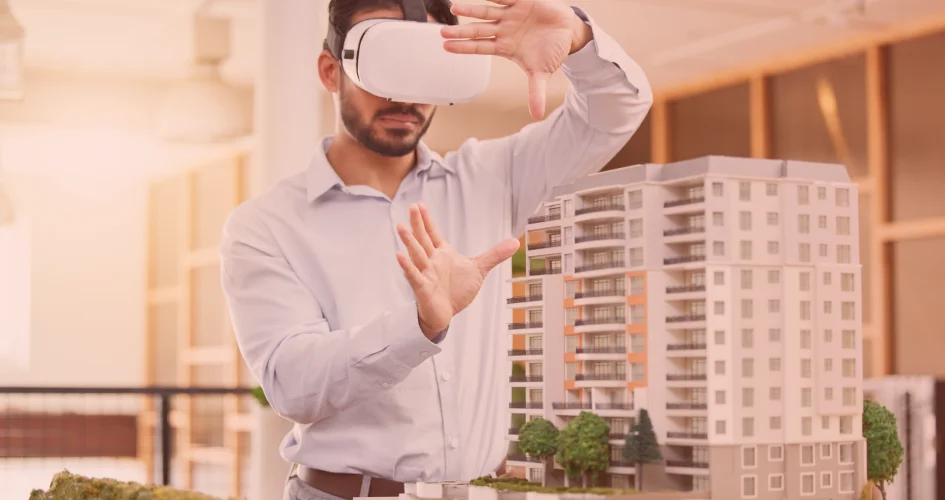It is almost three decades since the term Augmented Reality (AR) was added to the tech world’s glossary.
When it was first introduced by Boeing as an internal tool to aid designing, nobody imagined AR would become a popular technology for the masses.
In fact, nobody in their wildest dreams would have imagined AR apps to become so easily available.
But, we know how fast AR has become a part and parcel of everyday life.
The immersive reality experience that AR delivers has become so common that we don’t find it to be an exotic technology anymore.
And, that is definitely good news for businesses. Especially when they want to engage customers virtually and cannot afford to interact with them in person.
Now, here is a question that most sharp business people would be asking.
Is investing in Augmented Reality app development really worth it?
What benefits of AR warrants the investment in time, money, and resources put into it?
6 Strategic Benefits Of Augmented Reality (AR)
There are 6 major benefits of Augmented Reality that cannot be denied in any way.
In fact, they are tangible and deliver measurable results that brands have already started leveraging AR to their advantage.
Here is a quick brief of those benefits of Augmented Reality.
1. Creates unique customer experiences
The biggest advantage of Augmented Reality is that it creates unique digital experiences that blend the best of the digital and physical worlds.
Also, it does not need any special hardware or software to savor the experience.
Mainstream smartphones and mobile apps are sufficient to experience Augmented Reality.
In fact, the latest developments in AR have even made it possible to experience immersive experiences through web browsers.
Now how are AR experiences unique compared to other experiences?
The most common audio-visual experiences we know of exist either in the physical realm or in the digital realm.
Augmented reality, for one, blends both realities.
It places digital components atop physical components thus creating a mirage effect.
For example, users can point their smartphones at a tourist attraction when near its vicinity.
When viewed through the screen, the AR app places digital snippets on the screen thus allowing the user to consume both the physical and digital information synchronously.
A perfect example of this is the Apple Park Visitor Center.
Visitors at the Apple Park Visitor Center can explore the locale at various times of the day and night through an iPad.
2. It eliminates cognitive overload
Have you ever tried repairing an automobile by referring to a manual?
If not, give it a shot and you will quickly realize what a bad idea is.
Nothing against support manuals and docs, but, most often they do not help amateur users make sense of how to fix something.
Especially if it is a new model that does not resemble the previous car makes and engineering.
What we are referring to here is the cognitive information load.
Cognitive overload happens when your working memory is made to process a huge chunk of more information than otherwise, it can handle comfortably.
When you are unable to handle it, it leads to frustration and hampers your decision-making.
This is exactly the reason why amateur users struggled fixing something by referring to lengthy and detailed support documents.
Can Augmented Reality solve this problem? Augmented reality presents information in neatly summarized digital snippets.
It spares the user from having to process too much information to arrive at a conclusion.
Be it to identify a component by size or to see the popularity of a restaurant with a star rating, AR can help users take quick decisions without cognitive overload.
Source: Hyundai
This might seem too futuristic, but, there are brands that have already implemented AR-based mobile applications that are helping users do more with less time.
3. Heightens user engagement
When it first became popular, Augmented Reality was largely labeled as a technology for gaming and entertainment.
However, with time it has expanded into several other use cases that can deliver solid business gains. Heightened user engagement is one such gain.
In 2021 and beyond, if there is one priority that ranks top on the agenda of most business leaders, it is improving user engagement.
User engagement is like the gateway to several other benefits.
From more spending to brand loyalty it can yield countless gains for a growing as well as an established business.
The challenge is in serving the right material at the right time to the use that will make them engage.
Years ago, brands were mainly able to engage with users through print because of the large user base.
However, in 2020, 83.1 million consumers in the US were estimated to have used AR on a monthly basis (threekit)
Scannable product labels, interactive ads, catalogs, store signage — there are countless ways how AR can be used to heighten user engagement.
The novelty of the technology combined with its ability to deliver information in a quick and snackable \ay makes it engaging for users.
To cite a real-world example, Pepsi’s bus stop ad in London caught more eyeballs and attention than any print and TV ad could have.
It was pulled off with the help of Augmented Reality. Perhaps it is the single best campaign that showcases the advantages of Augmented Reality in Advertising.
Source: The Verge
4. Competitive differentiation
In a market where all competitors are offering homogenous products at the same price band, it is necessary for brands to differentiate themselves.
For so long, brands have used traditional advertising channels and the creative possibilities within them to differentiate themselves.
Augmented Reality will help them go out further with creative campaigns that will position them differently in a crowded market.
Let’s take Nike as an example. The sportswear market is definitely one of the most crowded and thickest markets there is.
Although Nike has been around for a long time, maintaining its market position and continuing to attract millennial customers needs extra effort.
Especially when the competition is on the heels with new innovative products.
Nike was able to cement its position as a global brand and a pioneer in marketing with its AR app.
If you have been shopping for shoes recently, you know how difficult it could be to find the right size shoe.
Sometimes the brand measurements don’t match your physical size. To help customers find their sizes easier, Nike has introduced an Augmented Reality tool.
The tool uses your smartphone camera to scan your feet and returns the exact size you should be going with.
Source: Design boom
Additionally, the app also gives several other trivia about the shoe, data, and so on that turns the shopping process into a fun activity rather than a chore.
Rest assured that the sky’s the limit when it comes to creating differentiating campaigns using Augmented Reality.
5. Immersive training
Organizations spend massively on training their employees and improving productivity. However, practical training is not always feasible. For example, in the manufacturing industry, training needs extensive equipment and a budget for training.
Apart from the scale at which you must design the training module, the evaluation process is also challenging.
Look into the future. Contact us now to forecast the long-term benefits of AR application development and understand how it can enhance your business growth over time.
Augmented reality helps in creating immersive training modules that do not need massive equipment and budget.
AR-based tools help employees visualize and simulate different scenarios for training purposes.
Organizations can also create interactive AR-based evaluation processes for measuring the efficiency of training modules.
According to the 2021 training industry report, the average company in the US spends $1071 per employee.
Training costs will be much higher if a company has thousands of employees. Augmented reality can help you create an immersive training module and enable a unique evaluation system.
However, it is also essential to understand the AR app development cost before going for it.
Training is necessary, but data becomes crucial whether companies want to evaluate employee productivity or operational efficiency.
This is where augmented reality can help in creating engaging data analytics.
6. Real-time analytics
Data analytics gives organizations actionable information for decision-making, monitoring operations, and security.
According to PRNewswire, 80% of companies reported an increase in profit due to data analytics.
Augmented reality can help you integrate real-time analytics on-site for operators and employees.
It allows operators to monitor system performance in real time and make adjustments to improve efficiency.
Augmented reality creates a visual representation of data with insights that enables an organization to improve processes on-site.
Here an AR app development company can help you integrate vital processes into a data analytics system for visual presentations.
Aligning your goals with the data analytics system is also critical for in-depth analysis.
Intelivita’s AR excellence!
Cloud computing paired with virtual reality excellence can deliver a unique experience, which is what the “Art of Work” app does for Microsoft.
Intelivita leveraged its AR/VR development expertise to build an application that enables USA businesses to create a unique customer experience.
In addition, it allows firms to envision how SAP migration to Microsoft Azure enables flexibility, reliability, and scalability.
This is where businesses like Microsoft, Amazon Web Services, and other cloud providers leverage AR/VR. Envisioning the cloud experience needs cognitive stimulation of human senses, and Augmented reality can make that happen.
Intelivita’s expertise with Unity3D and excellent mobile app development services can open new avenues for your business.
So, if you want to create unique Augmented Reality experiences, contact us, and we will provide tailor-made solutions.
In a Nutshell
As a race, we humans spend more time staring at screens of various sizes.
Our realities have become deeply integrated with digital experiences.
In fact, we have been programmed to rank a brand as superior and inferior based on its ability to dole out digital experiences.
In such a scenario, it is necessary for brands to leverage a mixed reality technology like Augmented Reality.
After all, it is the only technology that does a pure blending of physical and digital reality.
To sweeten the deal, Augmented Reality also offers a series of strategic benefits that businesses cannot ignore.
Be it winning attention, differentiating yourself from the competition, or simplifying processes for customers, Augmented Reality can help with it all.
With these benefits from Augmented reality in plain sight, the question to ask is NOT whether to adopt Augmented Reality, but how soon?









